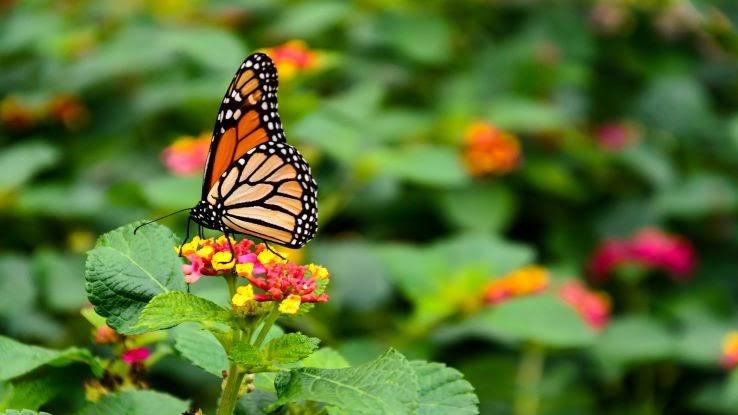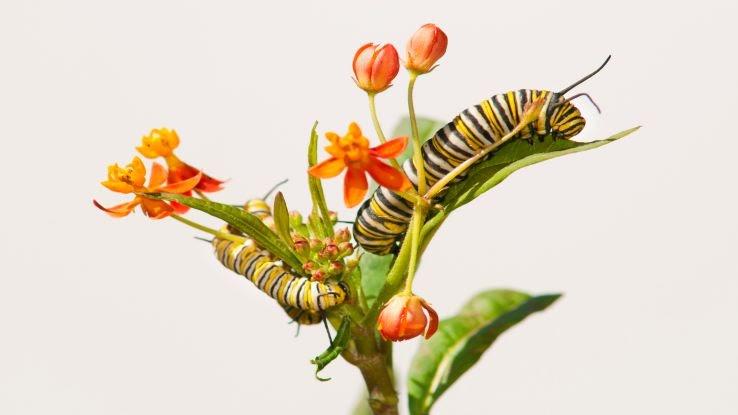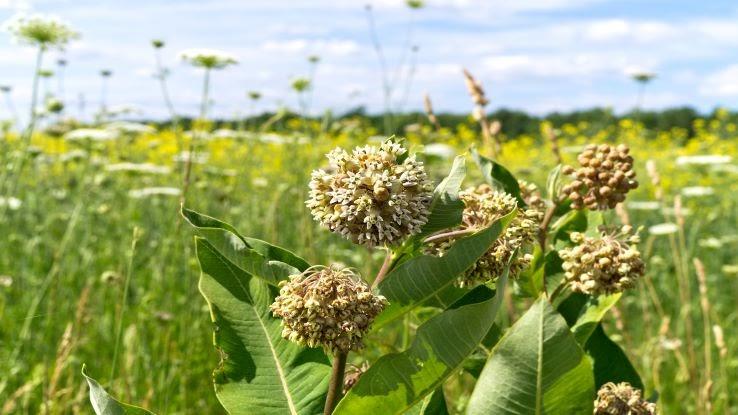Milkweed and Monarch: How to See More Butterflies This Summer

Sure, caterpillars look like worms and their fuzziness can make them more intimidating than the average earthworm. Yet, like earthworms, caterpillars do so much for their ecosystems and for the environment at large. They’re often likened to honeybees because there would be severe ramifications if their population steeply dropped. Unfortunately, Monarch populations are declining as a whole.
Monarch caterpillar and butterfly populations have notably declined since the 1980s. The Center for Biological Diversity, an organization that works to preserve animal species and promote biodiversity, is already reporting a decline of monarch butterflies this year compared to last. Along with countless other environmental organizations, the Center for Biological Diversity is now calling for the monarch butterfly to be designated an endangered species.
Thankfully, there are ways we can help, and our assistance may come in the form of a butterfly food source — a plant called milkweed. Milkweed and monarch butterflies are so intertwined that planting more milkweed can lead to more monarchs and healthier butterflies. And the way things are going, planting milkweed might become a necessity for gardens everywhere.
Milkweed and Monarch Butterflies: The Perfect Pairing and the Urgent Matter
Monarch butterflies and caterpillars matter to their ecosystems because they’re what are known as pollinators. Like bees, butterflies spread pollen and nectar that helps grow flowers. And flowers do more than look nice; they’re important food sources for other animals and produce more oxygen for all of us, among many other things. The caterpillars don’t do as much for the world as a whole; they kind of just eat with the intention of becoming butterflies. But when a caterpillar becomes a butterfly, it becomes a soldier for the environment.

There’s no way around it — monarch butterflies need milkweed to live. When monarchs are caterpillars, milkweed is their main food source, and they need quite a bit of it. Strangely enough, the internationally beloved picture book, The Very Hungry Caterpillar by Eric Carle, could be considered nonfiction. According to Texas Wildlife Association, monarch caterpillars eat up to 200 times their weight in milkweed. This might seem like a lot, but remember that caterpillars typically weigh 3 grams. That’s roughly 1.3 pounds of milkweed for monarch caterpillars per beautiful butterfly — and a clear reason why the plant is so vital.
There are over 73 species of milkweed, and monarch caterpillars eat most of them. However, many milkweed species are currently endangered. Correlation does not equal causation, but in this case, considering that milkweed is the only major food source for monarchs, this cannot be overlooked. The National Wildlife Foundation has gone on to say that the best way to help butterflies is to plant milkweed.
What’s happened all over the country is that milkweed and monarch populations have experienced damaging declines that they’re still recovering from. As of March 2022, monarch populations are on the rise, but it’s still estimated that there’s been a 95% drop in monarch butterflies since 1980. This is bad for those who see comfort in a flower, and it’s even worse for Planet Earth.
Monarch caterpillars can seem unpleasant or like a nuisance, but they’re a part of nature and play an essential role in the development of flowers. If you want to support their populations by feeding them, there are a few important things to know before you get started. Milkweed might be bad for some animals, but the plant is essential in many other creatures’ diets.
Milkweed, Mistaken Identity and Plants You Shouldn’t Eat
Milkweed does have its downsides. Leaves from the flower can be poisonous to people and some animals. Domestic animals and livestock can experience symptoms like elevated temperature, bloating and more if they chow down on milkweed, according to the USDA. Most animals that are negatively affected by milkweed won’t touch the plant unless it’s a last resort, so make sure any animals in your care are well fed to prevent floral mishaps.

It’s important to make sure that you aren’t confusing milkweed with milk thistle, too — the plants are quite similar. However, milkweed is a perennial flower, one that attracts all sorts of wildlife in addition to monarch butterflies. Milk thistles, on the other hand, are an invasive species that mostly pops up in poorly tended fields. Thistles in general have a body that’s more geared for persistent survival — they’re prickly and dry, the opposite of fun to eat.
Milkweed doesn’t have much of a health benefit for humans, domesticated animals and most livestock, but its benefits to the environment are so wide, it’s worth looking into planting milkweed flowers and making sure they’re out of reach from your pet. That’s particularly true if you’re looking to support local butterfly populations.
The dangers of milk thistle are greater than the dangers of milkweed, but because milk thistle is so invasive and does have nutritional value, there’s a lot more milk thistle out there than milkweed. If you’re ever clearing milk thistle or weeding your garden in general, learn to spot the difference between milkweed and other plants. You may save the lives of one or several butterflies and the season of spring as we know it.
Other Ways to Help the Monarchs
With nearly the entire population of monarch butterflies wiped out and little to no action from our government to preserve the species, we as individuals can take measures to bring back monarch populations and work to save the climate at large. There are several nonprofit organizations dedicated to this issue and some dedicated to milkweed and butterflies in particular.

We have links above to Western Monarch Count, and volunteering for them can be as simple as sitting in your backyard and waiting for butterflies to see how many are around — the number of butterflies is important as populations dwindle. You can also check out Monarch Watch, which provides free milkweed for nonprofits and schools, among other services. Save Our Monarchs offers similar programs and provides in-depth instructions for taking care of milkweed plants.
Monarch butterflies play such an important role in every ecosystem they interact with. They help flowers grow and make them beautiful. Flowers, like all plants, help give us more oxygen. We don’t breathe butterflies, but next time you exhale, think about the caterpillar that helped make that breath possible.





